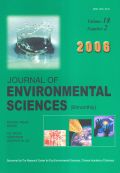Authors: Fu, Bo-jie | Liu, Shi-liang | Lu, Yi-he | Chen, Li-ding | Ma, Ke-ming | Liu, Guo-hua
Article Type:
Research Article
Abstract:
Soil quality is one of the most important environmental factors in sustaining the global biosphere and developing sustainable agricultural practices. A study was initiated in Wolong Nature Reserve, Sichuan Province, China to elucidate the soil quality changes of natural secondary succession, forest planting and agricultural practices after deforestation in the humid mountainous region. The soil qualities of six land use types (natural forestland, grassland, shrub land, secondary forestland, cultivated land and reforested land) were compared using two quantitative methods: the integrated soil quality index (QI) and soil deterioration index (DI). The QI values of natural forestland, grassland, shrub land, secondary
…forestland, cultivated land, reforested land were 0.8039, 0.3277, 0.9127, 0.6881, 0.0285 and 0.3183, respectively. The DI values were 0%, −14%, 12%, 1%, −26% and −18% respectively. Both indexes suggested that shrub land can restore soil properties. To compare the two methods more directly, a deduced index QI' based on QI value was developed. The results showed that DI and QI' had a very high linear correlation coefficient (r=0.9775) despite the values were different. Both methods were efficient in evaluating the soil quality levels and DI was a more simple way in soil quality assessment, while QI could show more ecological meanings.
Show more
Keywords: land use, deforestation, soil quality, quantitative methods, comprehensive evaluation, Wolong
Citation: Journal of Environmental Sciences,
vol. 15, no. 2, pp. 167-172, 2003
Price: EUR 27.50





